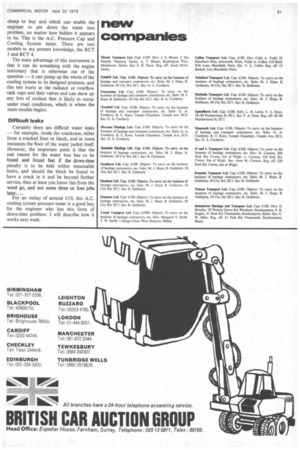road and
Page 62

Page 63

If you've noticed an error in this article please click here to report it so we can fix it.
workshop by Handyman
Details to save down-time (78)
To save down-time accurate fault diagnosis is essential: common traps can be avoided by use of diagnostic equipment
DOWNTIME can begin to assume really fearful proportions when a repair fails to correct a fault and your vehicle has to be returned to your workshop, This is where the engineer is in trouble; his diagnosis is questioned and the ability of his team doubted. The problem I have in mind is often associated with engine overheating, where either gasket failure or seizure stops the job.
When a gasket failure is audible then it may be accepted that this is all there is to it and the blown joint is replaced. Also, since there was overheating, it can be considered that the gasket was to blame and therefore no further search is made.
Thus it can happen that the engine is assembled and appears to be ok, only to fail within a very few miles when put to work fully laden. But this time there is a little more to it, the water loss seems to take over and the second stoppage is due to serious overheating and piston seizure.
We now have considerable down-time building up and the facts now point to water loss while at work, but where is this loss?
The radiator can be suspect and be removed and cleaned, also checked for throughput. The thermostat is also removed and tested — it may even be replaced to make sure. Quite often, these tasks are separate affairs, brought on by repeated failure with no one any nearer a solution.
Still the water loss goes on with thought given to cracked heads which may be opening up at top temperatures but passing no water when cold. Heads may be another section of the same job at another time and may be sent out for pressure test, or a known pair of sound ones fitted. Suspicion can rest on wet injector seats and these may be further rolled in to a tight fit.
' And so this saga of failure goes on until no one has any faith in either the vehicle, or the engineers for that matter, and down-time is reaching colossal proportions. This situation is by no means uncommon among today's vehicles and does tend to hit the medium unit, ie the 24-ton-gross class rather than the 32-tonner.
This may have something to do with the medium being more often overworked or over-revved than the heavier vehicle. Whatever the vehicle, when this kind of situation hits one it can soon develop into a nightmare in which the engineer can begin to feel he has got himself a Jonah motor. His problem is how to replace it and justify the cost.
Since this problem is one of incorrect diagnosis in the first place, inexperience could be blamed, as, after all, head gasket failure is common enough these daysand, thank goodness, these follow-up situations do not turn up every time.
Talking around the problem this year brought to tight the fact that for the pressurized cooling systems on the petrol or diesel vehicle, whether car or heavy commercial, there is a device that is quite cheap to buy and which can enable the engineer to pin down the water loss problem, no matter how hidden it appears to be. This is the A.C. Pressure Cap and Cooling System tester. There are two models to my present knowledge, the RCT 3 and RCT 4.
The main advantage of this instrument is that it can do something with the engine stationary that is otherwise out of the question it can pump up the whole of the cooling system to its designed pressure, and this test starts at the radiator or overflow tank caps and their valves and can show up any loss of coolant that is likely to occur under road conditions, which is where the main trouble begins.
Difficult leaks Certainly there are difficult water leaks for example, inside the crankcase, either from a cracked liner or block, and in some instances the floor of the water jacket itself. However, the important point is that the real reason for the water loss has to be found and found fast if the down-time penalty is to be held within reasonable limits, and should the block be found to have a crack in it and be beyond further service, then at least you know this from the word go, and not some three or four jobs later....
For an outlay of around £10, this A.C. cooling system pressure tester is a good buy for the engineer who has this form of down-time problem. I will describe how it works next week.




































































































